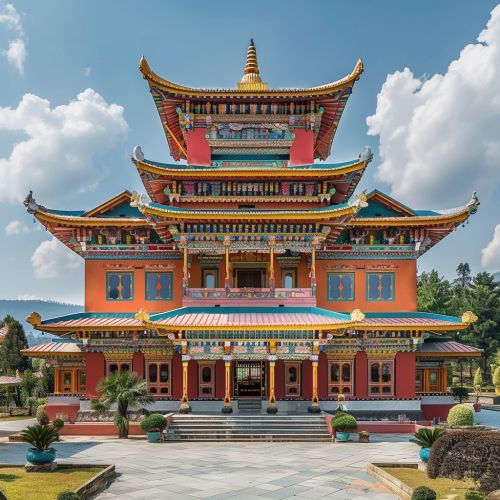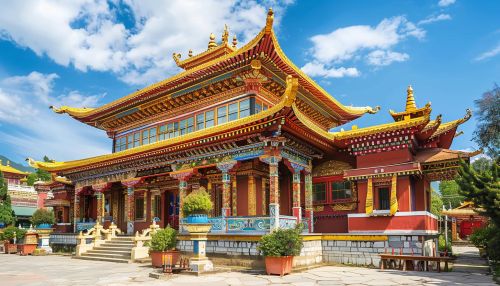Vajrayana
Overview
Vajrayana Buddhism, also known as Tantric Buddhism, is a major branch of Buddhist tradition. It is characterized by rituals, meditation practices, and the use of mantras and mudras. Vajrayana is often considered the third major 'vehicle' (Yana) of Buddhism, alongside Theravada Buddhism and Mahayana Buddhism.
Etymology and Terminology
The term "Vajrayana" is derived from the Sanskrit words "vajra," meaning diamond or thunderbolt, and "yana," meaning vehicle or path. This implies that Vajrayana is the "Diamond Vehicle" or the "Thunderbolt Vehicle," suggesting the power and directness of this path to enlightenment.
History
Vajrayana emerged in India in the 5th to 6th century CE, during the time of the Gupta dynasty. It was a synthesis of various Buddhist, Shaiva, Vaishnava, and local traditions, with its main source of inspiration from the Mahayana tradition.
Beliefs and Practices
Vajrayana Buddhism is known for its complex and rich set of practices and beliefs. These include the use of mantras, mudras, and mandalas, as well as the practice of deity yoga and guru yoga. Vajrayana also emphasizes the role of the guru or spiritual teacher, who is considered essential for the practitioner's spiritual progress.
Influence and Spread
Vajrayana Buddhism spread from India to various parts of Asia, including Tibet, Bhutan, Mongolia, and parts of China and Japan. In these regions, it evolved into unique forms of Buddhist practice, such as Tibetan Buddhism and Shingon Buddhism.
Vajrayana Today
Today, Vajrayana Buddhism continues to be practiced in many parts of the world, both in traditional Buddhist countries and in the West. It has also influenced various aspects of Asian culture, including art, literature, and philosophy.
See Also


